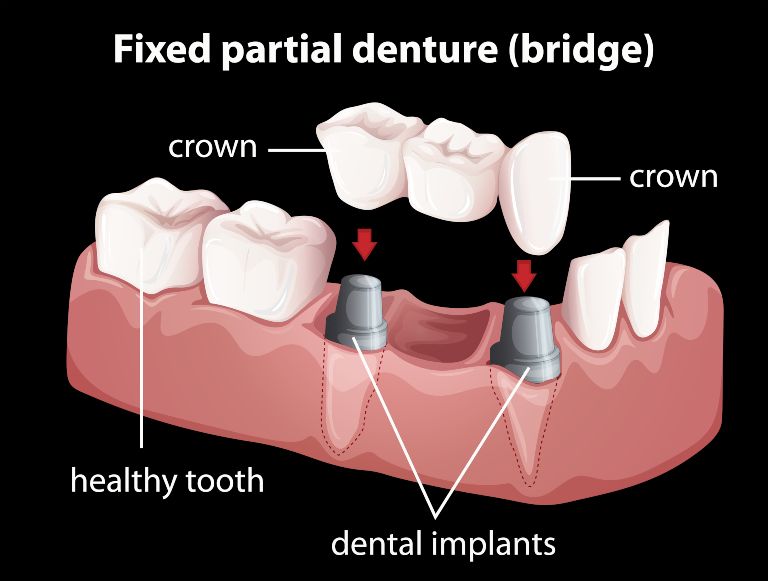If you’re in need of missing tooth replacement, you might want to look into dental crowns and dental bridges. These are two of the most convenient ways to fix your missing teeth predicament, and in this article we’re going to take a look into what a dental crown is as well as what a dental bridge is and what dental crown procedure entails.
So what is a dental crown? It’s a cap, or cover, that dentists put over a tooth. Dental crowns bring the tooth in question back to its normal size, shape, and function. Crowns can even make your teeth stronger and improve the way they look.
There are a few reasons you might want to get yourself a crown; cavities that are too large for fillings, teeth that are cracked or worn down, after having root canal treatment done, or to cover a badly shaped or discolored tooth and fix your smile.
Dental crowns can be made from ceramics, metal alloys, porcelain, porcelain that’s been fused to metal, or composite resin. Whatever the material, it will likely be colored so that it blends in with the natural color of your teeth.
A dental bridge is made with two or more dental crowns on either side of a gap made by a missing tooth, with a false tooth (or teeth) placed in between. These type of fake teeth are called pontics, and they can be made of multiple materials such as alloys, porcelain, gold, or a combination of them. The purpose of a dental bridge is just what its name implies, to bridge the gap created by a missing tooth or teeth. The bridge is supported by natural teeth or implants if that’s the case.

You have four different kinds of dental crowns, mostly based on the type of material used.
The filling materials and the tooth underneath the crown will dictate the sealing ability of all-porcelain crowns. The other three, however, provide far superior seals against leakage. Gold and metal alloys are still the best, sturdiest materials for crowns.
Likewise, there are also four types of dental bridges.

The procedure for crowns is rather simple. The first visit is for investigation and prep. An x-ray will be taken and an impression will be taken on the tooth. The second visit is for placing the crown. If the dentist uses a digital model called a wand to make 3D models of the tooth, it’s possible for the crown to be placed on the same day.
It’s similar with dental bridges. The first trip to the dentist is for preparation and placing temporary bridges. A second appointment will be necessary to place the permanent bridge. Taking care of your bridge after your done with the procedure is very important, and it’s advisable to go for follow up visits to your dentist to make sure everything is functioning as it should be

